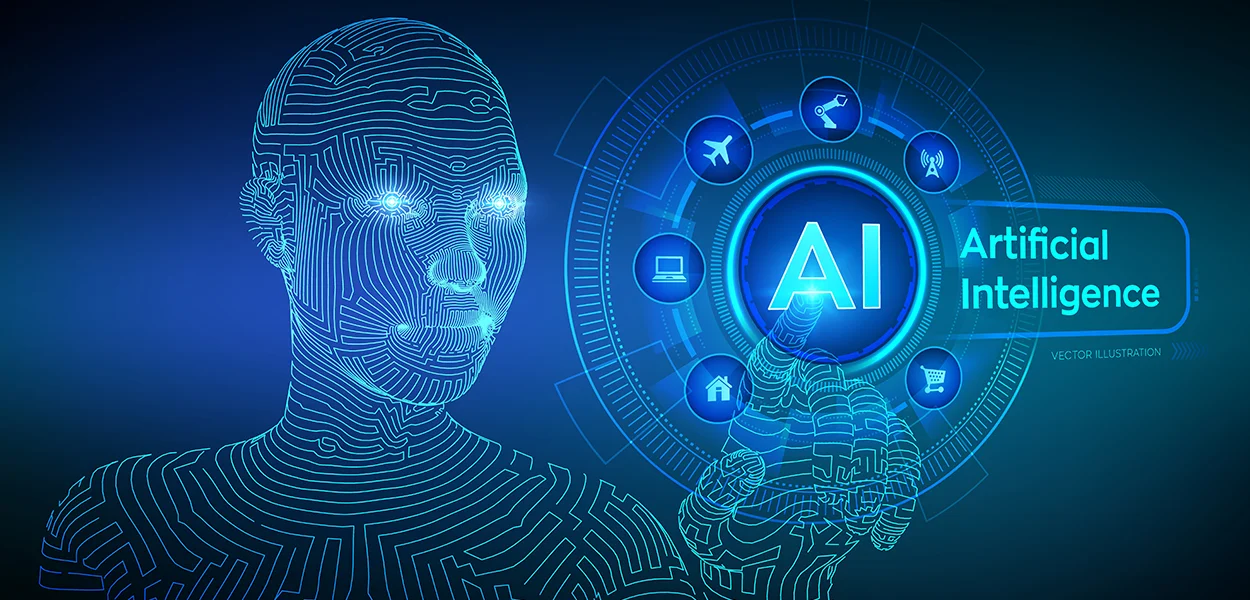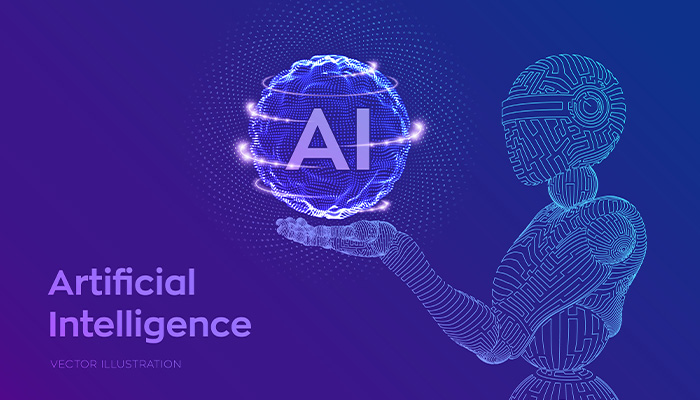What is Generative AI and Example?
What is Generative AI and Example?
Sep 2, 2023 03:58PM
What is Generative AI and Example?
Sep 2, 2023 03:58PM

Generative AI is one type of artificial intelligence that is able to create content such as audio, text, videos, images, and other information. While traditional AI algorithms are used to find patterns in the data set of training and to make predictions in generative AI, generative AI makes use of algorithms that learn to produce outputs that are based on a trained data set.
Generative AI services produce outputs using the same medium that is being prompted (e.g., text-to-text) or in a different format from the instruction (e.g., text-to-image or video-to-image). Examples of generative AI are ChatGPT, Bard, DALL-E, Midjourney, and DeepMind.
Generative AI is a form of machine learning that, in essence, is based on training models of software to predict future outcomes from data, removing the requirement for explicit programming.
Particularly, AI models are fed huge amounts of content that they already have in order to train them to create new content. They are trained to recognize the underlying patterns within the data set based on a probabilistic distribution, and at the prompt of a user, they generate identical patterns (or outputs based upon these patterns).
As part of the umbrella category of machine learning, also known as deep learning, generative AI utilizes a neural network that can deal with more complicated patterns than traditional machine learning. Based on the human brain, neural networks do not necessarily require supervision or intervention from humans to detect patterns or differences in the data used to train.
Generative AI solutions can be implemented on various models that use various techniques to develop the AI and produce outputs. These include generative adversarial networks (GANs) and transformers, as well as variational autoencoders (VAEs).
The widespread use of AI software has already altered how people interact with the world. For instance, voice-activated AI is now pre-installed on numerous phones as well as speakers, among other common devices.
Users can also interact with the generative AI via various software interfaces. This has been among the major innovations that have opened the access and enabling of generative AI to a broader public. While earlier versions of generative AI required skills in data science or technology to work with the programme, AI developers are now creating user-friendly experiences where instructions can be provided and interactions can be conducted in plain English.
Here are a few of the most popular examples of generative AI interfaces:
The ChatGPT was created through OpenAI. ChatGPT is an example of text-to-text dynamic AI, which is, in essence, an artificial intelligence-driven chatbot designed to communicate with users through natural language conversations. ChatGPT users can use ChatGPT to ask ChatGPT questions, engage in back-and-forth conversations, and ask it to write text in various styles or genres, including stories, poems, essays, or recipes, among other things.
The release date is November 20, 2022. ChatGPT will be available for free. ChatGPT is available for download on the internet. OpenAI also offers the API for ChatGPT, along with other subscriptions for enterprise and embedding options. 56
Bard is a text-to-text generative AI interface built on Google's vast model of languages, LaMDA (Language Model for Dialogue Apps). Much like ChatGPT, Bard is a chatbot that is powered by AI technology and can respond to questions or create texts based on prompts from users. Google describes it as a "complementary experience similar to Google Search."
In March 2023, Bard was made available to the public for access in the United States and the United Kingdom, and plans were made to make it available to other nations in more languages later in the future.
Artificial intelligence has a surprising long history, with the notion of thinking machines dating back to the beginning of Greece. The first neural networks (an important component of the technology that underlies the concept of generative AI) capable of learning were created in 1957 by Frank Rosenblatt, a psychologist at Cornell University.
The development of neural networks resulted in their widespread application in AI in the 1980s and into the following decades. The year 2014 saw the introduction of a new type of algorithm known as generative adversarial networks (GAN) that could be used to create generative AI applications that include videos, images, and audio.
In 2023, the growth of large-scale language models such as ChatGPT is a sign of the rapid growth in popularity of generative AI and its variety of applications.
A lot of generative AI systems are built on foundation models that are able to complete many tasks and have an open-ended nature. In terms of applications, the possibilities for the use of generative AI are endless, and perhaps many remain to be discovered or even implemented.
The capability to use generative AI to operate across various different types of digital media (text-to-image or audio-to-text, for instance) opens up a myriad of new and profitable possibilities. As industries and businesses continue to incorporate this technology into their workflows and research, numerous new applications are likely to come up.

A few examples of current usage scenarios for artificial intelligence models include: AI models are:
Translation
Academic, creative, and business writing
Writing code
Genetic sequencing
Grammatical corrections or analysis
Songwriting and composition
Dubbing
Transcription and dictation
Voice and speech recognition
Sound editing
Illustration
Infographics
3D modeling
Creative design
Image editing
Architectural rendering
Naturally, AI could be utilised in almost any field to automate mundane tasks like minute-taking documentation, coding, and editing. It can also be used to enhance existing workflows in conjunction with or within existing software.
Since generative AI models are being packaged to be used in specific business applications or created in an open-source manner, industries continue to develop and find ways to benefit from the possibilities of generative AI models.
Like every major technological breakthrough, generative AI offers a wide range of possibilities and has been previously discussed in depth; however, there are some negatives to take into consideration.
Enhancing productivity through automation or speeding up the process
Eliminating or reducing levels of skill or time for the creation of content and applications that are creative
Allowing the analysis or exploration of complicated data
Making use of it to create artificial data to improve and train other AI systems
Hallucination: This phrase refers to the tendency of some AI models to create absurdity or error that does not match with reality, the real world, or common sense logic.
Dependence on labeling: data While numerous artificial intelligence (AI) models can be generative, and AI models are able to be developed in an unsupervised way by using data that is not labelled, accuracy and quality of data are ssues. A lot of tech companies, like OpenAI, Facebook, and TikTok, depend on contract workers with low salaries who carry out data enrichment activities like labelling or creating training data.
Problems with content moderation :Another problem is the capacity of AI models to detect and eliminate inappropriate content. Similar to the labelling of data, much of this task is still dependent on human workers to label and filter huge quantities of potentially offensive and damaging content.
In addition to issues with labour: such as those mentioned above, algorithms have been shown to enhance or replicate the existing biases and discrimination in the data used for training. This could have devastating negative consequences. For instance, Amazon created (and then removed) an AI-powered recruitment tool that was discriminatory towards women.
Legal and regulatory concerns:>The legal system does not have the right system to address the potential implications of new AI technology.
Copyright concerns:Because the generative AI algorithms are developed using an enormous amount of material, it could be difficult to determine if the material included in the data or results of the model violates copyright laws.
Privacy concerns: Generative AI raises concerns about the collection, storage, use, and security of data, including business and personal.
Responsibility and autonomy: AI technology raises concerns regarding responsibility. For instance, in the case of autonomous systems, such as self-driving vehicles, there is no clear way to determine liability in the event of accidents.
Politics: Generative AI raises issues regarding false or misleading information as well as the credibility of certain media like photographs or recordings of voices. It may also hinder processes that encourage democratic engagement through the falsification of an overwhelming number of submissions, comments, or messages.
Consumption of energy:AI models have a significant environmental impact since they consume a large amount of electricity in order to operate. As the demand for AI models increases, so does the pressure on the environment.
Generative AI can be beneficial to almost any field or business by boosting productivity and automating processes, as well as enabling new methods of creation and an in-depth analysis of datasets or creating artificial data on which future AI models can be trained.
Generative AI is also extensively used in various government applications.
As an emerging technology that is constantly evolving, the regulations and protection frameworks haven't yet caught up to generative AI as well as its potential applications. One of the biggest concerns can be the capability to identify or validate content created by AI instead of humans. Another issue, known as the "technological singularity," is the possibility that AI can become a sentient being and surpass the capabilities of humans.
Affluent generative AI interfaces are ChatGPT, Bard, DALL-E, Midjourney, and DeepMind.
The term machine learning refers to the capacity to teach computer programmes to make predictions using information. Generative AI makes use of machine learning algorithms.
The neural network can be described as a kind of model based on the human brain that analyses complex data and can make predictions. This technology enables generative AI to recognize patterns in the data and then create new content.
Generative AI is a thrilling new technology that has unlimited possibilities and can change our lives and work. In the past, AI has been the domain of engineers, data scientists, and experts. However, today it is possible to command software using plain language and produce new content in just a few seconds, which has opened AI to a much larger audience.
Like any other technology, however, there are a myriad of questions and concerns to be aware of in relation to the applications of AI. There are many implications, ranging from ethical, legal, and political to environmental, social, and economic, that are being or will continue to be discussed as generative AI is used and improved.
Contact US!

1968 S. Coast Hwy, Laguna Beach, CA 92651, United States
Copyright © 2025 PerfectionGeeks Technologies | All Rights Reserved | Policy